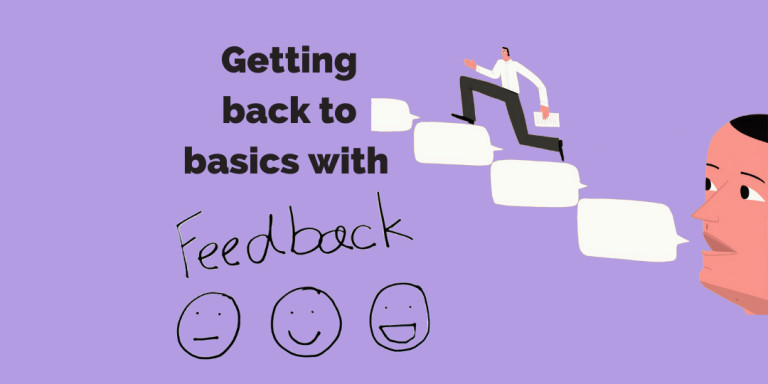You may think you know how to provide feedback, yet sometimes we need to get back to basics to make sure our feedback is powerful and effective!
It’s important to remember the true purpose of feedback – it’s not about making a person feel better, but about helping them to do better.
When people consider themselves to be good at their job, they are often confident enough to gladly receive even quite negative feedback. On the other hand, people new to their role and therefore less experienced, will be more eager to seek out your positive views on their performance.
Perhaps an obvious reason for this is that, as people increase in their level of expertise, our feedback serves a different purpose. The lower the level of confidence, the more encouragement is needed.
Be specific
The basic principle is to offer very accurate, constructive feedback and to suggest specific things that can be done to improve performance. Focus on the most tangible and recent examples of the issue, and try to separate the emotions involved and concentrate on the technical points.
“That’s easier said than done,” I hear you say – and no one wants to be perceived as the baddie.
Remember – you can give positive feedback too, though you won’t be helping anyone if all you do is try to be too much of a crowd pleaser.
Think twice before you try that old favourite of the positive-negative-positive ‘feedback sandwich’. People will often only hear the praise; the bread of the sandwich, and miss the filling. Choose one or two clear issues to concentrate on, don’t try to overload with lots of criticism all at once – it’s too much to take in, and can be disheartening.
Time is of the essence
Always give constructive feedback in private, it can be seen as insensitive if discussed in front of others. Positive feedback can also be a private affair for some people – they can always tell colleagues you have praised them if they choose to.
When giving feedback, as well as not giving enough information, another issue can be giving it too late. Take advantage of the situation when the event in question is fresh in the person’s mind.
The trick is to make constructive feedback precise and timely, in order for it to be helpful – yet not emotive, so that it is not seen as overly critical. Getting to the point quickly is also vital. Remind yourself that the person wants (and deserves) to know how to improve their performance.
Feedback, discuss, check understanding, move on
Give any constructive feedback on a person’s behaviour with accurate descriptions, and avoid comments about personal qualities and personality. There is also no need to give the same feedback on the same point over and over.
Allow time for the person on the receiving end of the feedback to voice their opinion and ask questions. Encourage them to explore their behaviour, this way they can decide what might be done to change it. Don’t compare them with their colleagues, as this can lead to jealousy and resentment. After all, we are all different and are recruited on this basis.
Check that they have understood. Perhaps ask “What are your thoughts on what we’ve talked about?” Take the opportunity to review what you’ve agreed.
Benefits to you and the team
Many of us don’t relish the idea of giving or receiving feedback. Remember this in both situations; and try to keep your emotions under control. Feedback given in anger is unlikely to result in a positive outcome for either party!
It will make your role much more fulfilling if you are part of a team that is unified and focused on maximum productivity.
Even the most successful of team needs regular nurturing with feedback to maintain it.








